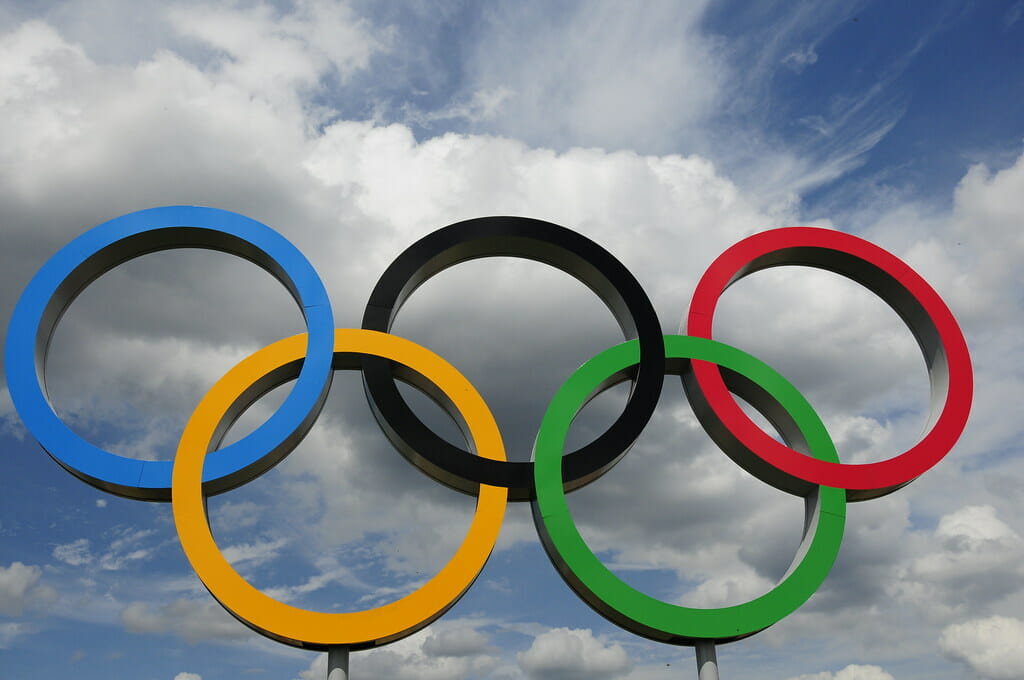November 11, 2020 by Charlie Eisenhood in Livewire, News with 0 comments

Rich Perelman’s TSX Report, a multi-weekly email newsletter about the latest in Olympic sport, had a segment this week about ultimate’s hopes for the 2028 Summer Olympics in Los Angeles.
Already a part of the World Games, the multi-sport behemoth that will be held in Birmingham, Alabama in mid-2022, the World Flying Disc Federation – yes, Frisbee – is proposing to join the 2028 Games as well (the 2012 World Championship match between Japan and the U.S. is pictured above).
The concept for a light, flying disc apparently originated on an L.A. beach in the late 1930s and a model was commercially sold as early as 1948. The plastic “Frisbee” was created in 1957 and took off as a sporting item in the 1960s, quickly leading to the creation of competition teams in football-style and golf-style games.
In fact, 2016 Olympic javelin champion Thomas Rohler (GER) uses Frisbees in his training routine:
“For me, disc golf, is the best warmup or recovery game there is. I really appreciate the reverse movement for shoulder prehab. I got a new understanding of precision and flight characteristics when I started testing many different discs. I love the challenge of hitting a good throw with multiple discs. As a training aspect.”
Now, Ultimate Frisbee – with scoring similar to American Football, but with one point for catches in an end zone – is played in about 125 countries and the World Flying Disc Federation – founded in 1985 – has 88 member nations. The game has seven players per team and is played in 90-minute games on a 40×70-yard field plus end zones of 20 yards deep, a little smaller than a regulation American Football field. A tournament with eight countries could be held with mixed-gender teams, alternated between 4 men/3 women and 4 women/3 men; the total number of athletes would be 112.
Equipment costs are field markers and 100 Frisbees; you can buy a competition model today for $10-20 apiece.
This is a true Southern California sport, and has to be one of the least expensive to stage. It further offers the LA28 organizers an opportunity to have a sport in East Los Angeles, which hosted field hockey at East Los Angeles College and judo in Cal State Los Angeles in 1984, but is currently uninvolved in the 2028 plan. ELAC’s stately Weingart Stadium, now seating 22,355, could be used and also includes nearby space for warm-up and administration.
The WFDF is so excited about the possibilities for 2028 that it will stage its 2021 World Beach Ultimate Championships in the Los Angeles area in November; the area is already the site of two major annual beach Ultimate tournaments every January.
The LA28 organizers are already being bombarded with concepts for added sports for the third Los Angeles Games. Already committed to $160 million in funding for youth sports through the City of Los Angeles Department of Recreation and Parks, it will be fascinating to see how its drive for future fitness and family participation will be aligned with its choices for added sports to an Olympic program that may be more open than normal, especially if boxing and weightlifting are eventually excused.
Read more about WFDF’s efforts to get ultimate into the 2028 Olympics here.